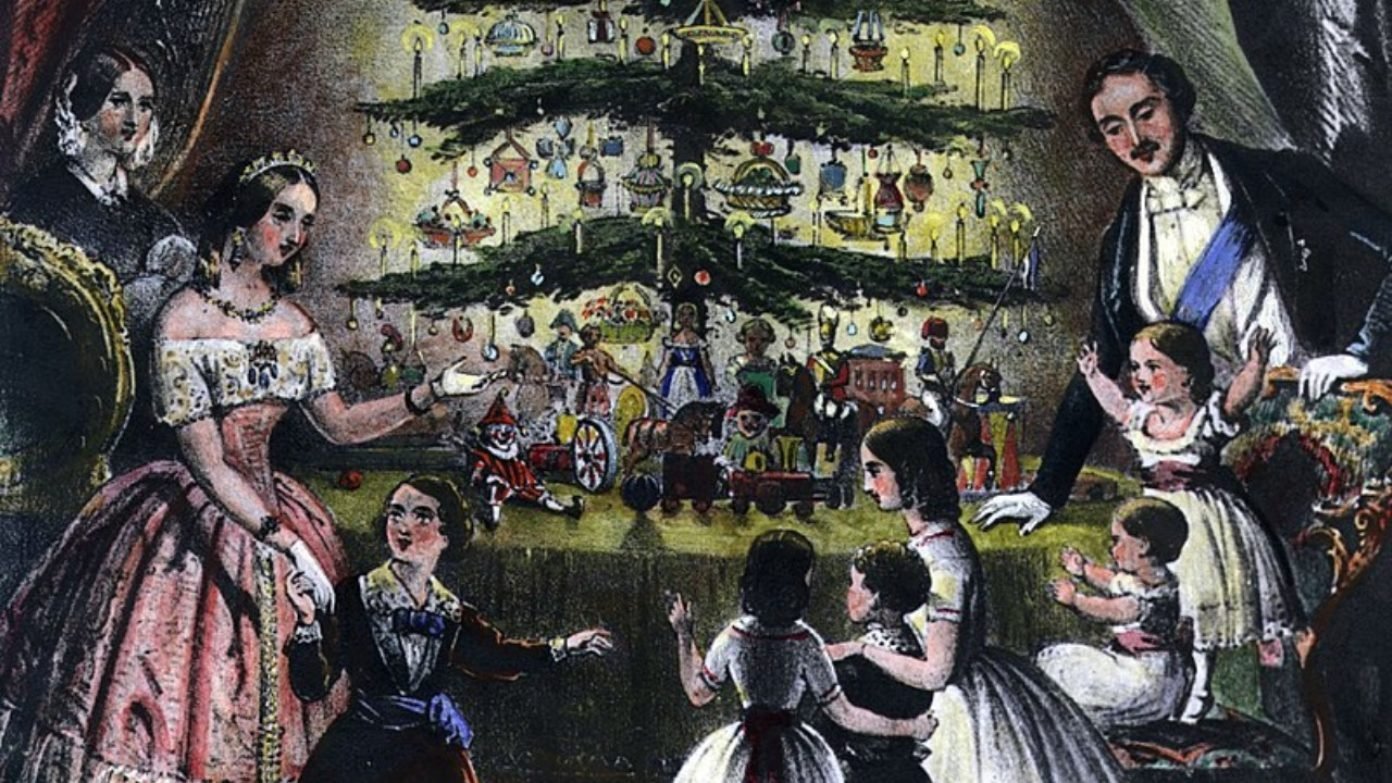A (Brief) History of Christmas Music
New Years’ has Auld Lang Syne, and Halloween has the Monster Mash, and Thanksgiving has...that one Ben Rector song, but Christmas has hundreds of thousands of songs that are played 24 hours a day for a full month. Okay. Let’s be honest. It’s closer to 3 months…maybe 4.
Part 1. Saturnalia
The Romans threw a festival each December to celebrate the god Saturn. This was a very festive festival. People would continuously eat, drink, and just generally be merry. During the festival, gifts were exchanged, gambling was permitted, and masters would serve their slaves. Music was certainly a part of these celebrations. Festive frolics frequently feature folk-songs.
While Saturnalia probably influenced some of the practices of later Christmas celebrations around the world, the early Christian Church was very against many of the more raucous traditions. So, how did Jesus’ birthday end up on December 25?. Well, you see it all goes back to the early Christian concept… Nope. There’s no time. Not for this post. Not today.
Part 2. Earliest Christmas Songs
For a religion that celebrates Jesus, his birthday is pretty important. The Catholic church has a lot of mass, but on December 25 they have 3 times the mass - this one they call the Christ Mass. A good number of the songs for these masses were nativity related - such as Veni Redemptor Genitum (Come Redeemer of the Nations), and Corde Natus (Of the Father’s Heart Begotten) - both from the fourth century.
Part 3. Middle Ages/Renaissance, Rise of the Carol
The church calendar by the middle ages had a healthy dose of Christmas. Four Sundays are devoted to Advent - for...reasons. January 6 is Epiphany, which celebrates the visit of the magi. December 25 to January 6 make up the 12 days of Christmas. So even by the middle ages, Christmas lasted from the end of November until early January.
In the 12th Century, St. Francis popularized Christmas songs in vernacular languages and not just in Latin. A lot of familiar songs show up around this time. (Personent Hodie, Gaudete, Christus Natus Est, O Magnum Mysterium, Lo How a Rose E’er Blooming, Good King Wenceslas). Some of these are written by composers employed by churches, for use in a church service. Most however, are much older. By the time a carol or song shows up in a publication, it’s probably been sung by the people for quite some time before that.
Carols first show up in England in 1426 when John Awdlay published “25 Carols for Christmas”, likely a common collection of wassailing songs. What’s wassailing? It’s this thing where a group of people would go from house to house, singing songs and offering people a drink from the wassail bowl. All they ask in return is a gift. Maybe some figgy pudding. Maybe they won’t go until they get some. Another type of wassailing involved a group of people going to an orchard and singing directly to the trees to promote a bountiful harvest. I haven’t seen any scientific studies as to the efficacy of this method.
Martin Luther had a falling out with the Catholic church, but that’s a whole other can of Worms. Martin Luther loved Christmas. Legend has it that he found a particular tree so beautiful that he murdered it with an axe and displayed it in his home. Who would do such a thing? He probably didn’t write Away in a Manger, but he did write a handful of other Christmas hymns. The Lutheran flavor of the Protestant reformation held congregational singing in high regard - so singing Christmas carols became a popular fixture of services in protestant churches.
Part 4. Baroque/Classical Masterworks
As music entered the concert hall, Christmas music did too. Composers like Corell and JS Bach both have Christmas Oratorios. A lot of composers have choral settings of the Magnificat and Nunc Dimittis, both biblical texts surrounding the birth of Christ. It’s a lot of composers. I even have a setting...Everyone else was doing it.
Handel wrote the Messiah - which, like Lord of the Rings, is nearly three hours long - but, unlike Lord of the Rings, contains the Hallelujah Chorus. The libretto was written partially as a counterargument to Deism. It’s amazing how much church music is written to prove someone else is wrong. Despite a lackluster reception at first, it’s now performed every. single. year.
And we can’t forget Tchaikovsky’s ballet The Nutcracker - which, was not in Home Alone, contrary to popular belief.
Part 5. Victorian Carols
Some Christmas celebrations were apparently getting too debaucherous, so England canceled Christmas in 1644. Whoops. It’s okay, Oliver Cromwell, French revolutionaries weren’t fond of Christmas either. Celebrations returned with the restoration of the monarchy in 1660.
England saw a renewed admiration for Christmas in the Victorian Era, due in part to Prince Albert bringing German traditions with him when he married Queen Victoria. And with that, we got a new flurry of Christmas Carols throughout the 19th Century. The most popular carols continued to be a mix of traditional and newly written songs. Codified in large collections published in 1833 and 1871.
Part 6. Tin Pan Alley
Christmas songs remained largely in church and community celebrations through the early 20th century. But two things would change that. The radio, obviously. And World War II. The US Office of War Information commissioned the composers of Tin Pan Alley to write a rousing wartime song to boost morale. But nothing seemed to catch on with the public or the troops. It was surprisingly the nostalgia and homesickness of White Christmas that resonated with US troops who were spending Christmas away from home.
Irving Berlin wrote the song for Holiday Inn. Not the Hotel chain. The movie Holiday Inn - starring Bing Crosby. Berlin did apparently wrote the song in a La Quinta Hotel. Bing Crosby first sang the song for US radio audiences just weeks after the Pearl Harbor attacks in 1941 - it would become one of the most popular songs of 1942. Crosby would later sing the song for US troops in France in 1944.
After the war, Christmas songs became much more popular among the public with their inclusion in movies (such as “Have Yourself a Merry Little Christmas” from “Meet Me In St. Louis”), and in Broadway shows (such as “We Need A Little Christmas” from the musical “Mame”). That song includes a character complaining about the Christmas decorations going up too soon - only a week after Thanksgiving. Different times.
Part 7. The Rise of the Christmas Album
While songs like Santa Claus is Coming to Town and Winter Wonderland were published earlier, White Christmas was really the first Christmas song to dominate the charts. Many of our Christmas classics were written in the following decade, looking to capitalize on that trend. Perhaps fittingly enough, Bing Crosby was one of the first artists, if not the first, to release a dedicated Christmas album in 1945.
Album production steadily increased through the next couple of decades with a notable jump in the late 80s. Just about every major artist puts out a Christmas Album. Elvis, The Jackson 5, Mariah Carey. Even Alvin and the Chipmunks. Albums typically include a blend of Christmas Classics and songs written for that album.
At least according to Wikipedia, 2008 was the height of the Christmas album, with 70 different Christmas albums released. And why not make a Christmas album? They make a boatload of money, and they get put on repeat for a few months every year. Does anyone have a good statistic on revenue? It’s got to be in the billions. So, yeah, go right now and make a Christmas album. No seriously, what am I still doing writing this post?
Anyway, that’s a brief history of Christmas music. Click below if you want to see me rant about Christmas songs that make no sense.



